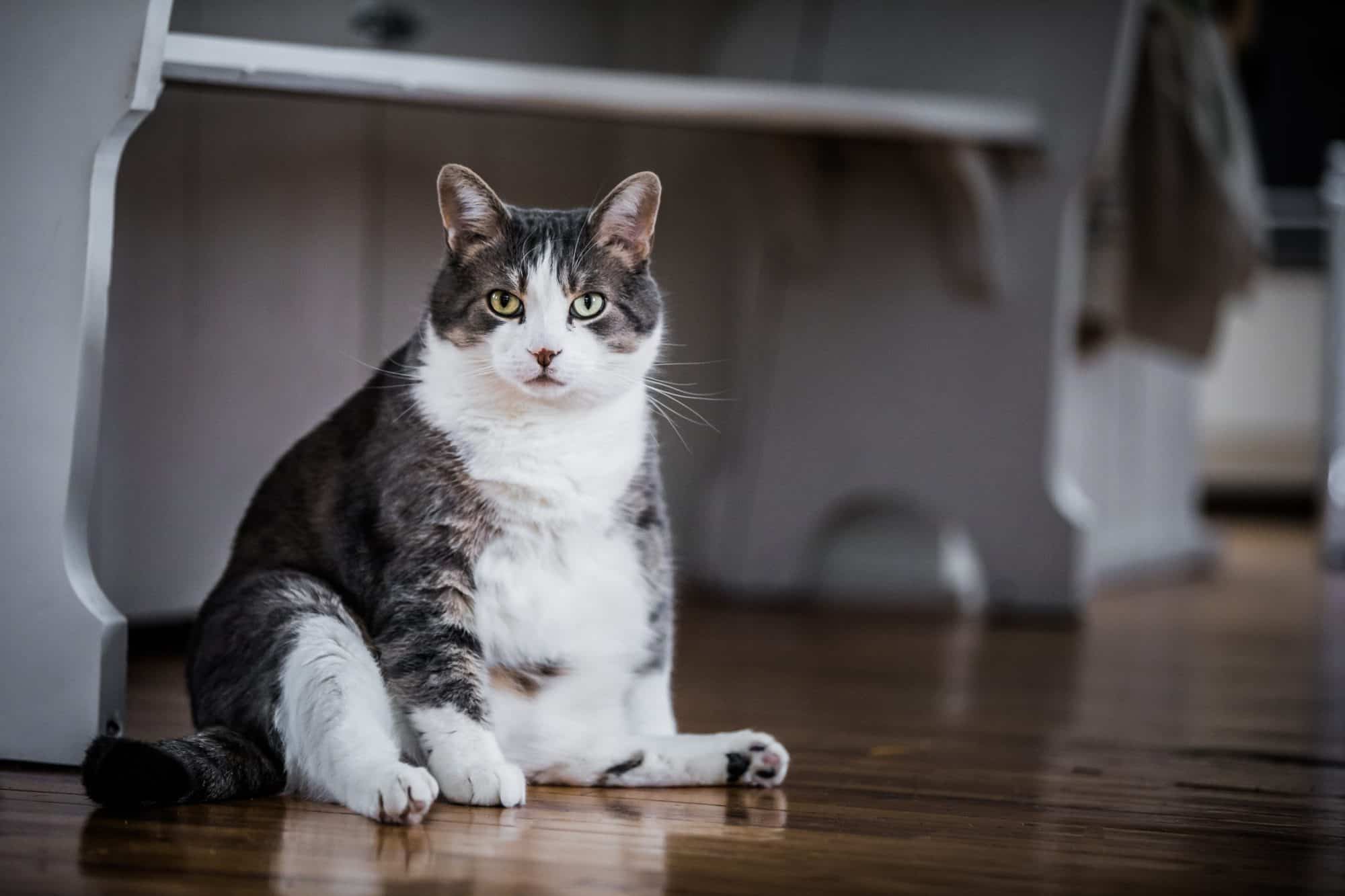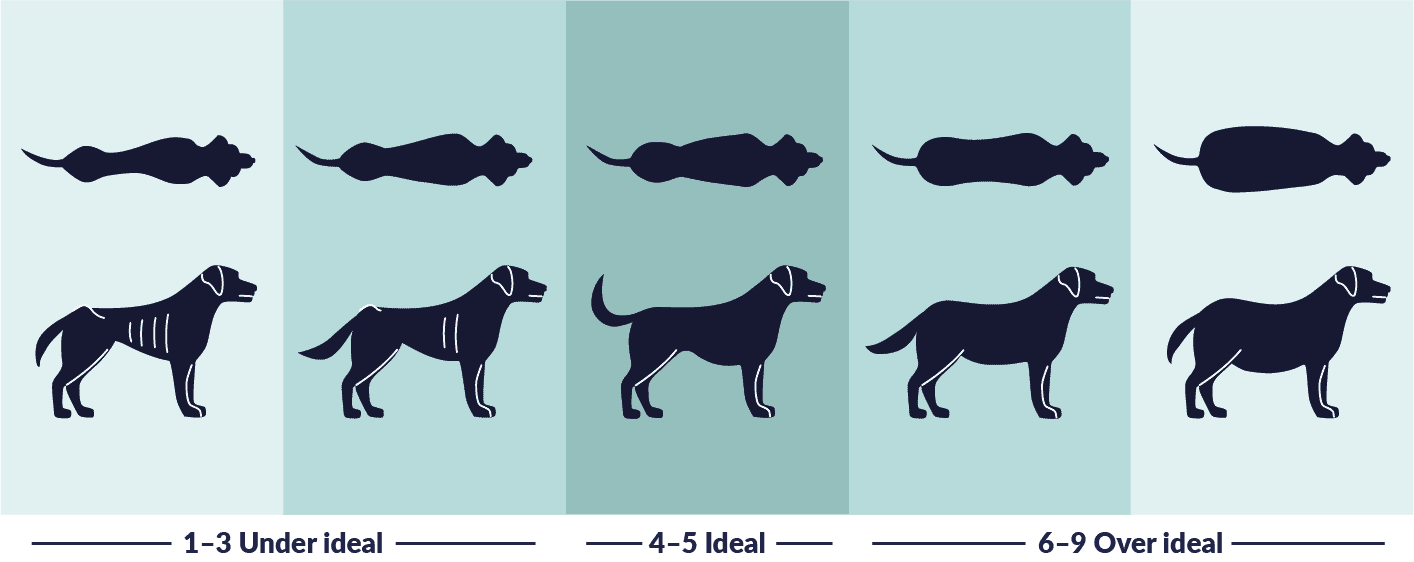My Dog or Cat Isn’t Fat! They Are Just Fluffy.

Weight isn’t just a number
No one really wants to talk about it—weight that is. It is one of the first things I evaluate as a veterinarian. For every appointment at Borgfeld Animal Hospital we put your dog or cat on the scale and get their updated weight. As part of their physical exam, we determine a body condition score. These values help to determine if you pet is healthy or if there could be an underlying problem. The sad truth is that most pets that we see are technically considered overweight to obese. It has become so commonplace to see overweight pets that what a veterinarian considers normal or lean most owners consider too thin. And the vice versa applies. What an owner considers normal, we as veterinarians would deem as overweight.
I get it. It is hard to say no. When your cute dog is sitting so nicely looking at you for a treat, it is hard not to oblige. Or maybe you have a persistent cat that will torment you until you give them food. I have one of those at home myself. But at the end of the day, all that ends up happening is that your pet ends up getting too many calories. Add in a sedentary lifestyle that most pets have, and it is no wonder that the pets we see are too heavy.
Is my pet fat?
You are probably wondering right now if your pet is overweight. There is a pretty easy way to tell. First, when you look at your pet from the top you should be able to see a nice tuck where their waist is located. If their body looks more like a log, they are probably too big. You can also look at them from the side and you should also see another tuck where their abdomen nears their back legs. Secondly, you should be able to feel your pets’ ribs. This test is a bit more subjective as you don’t want the ribs to feel too prominent but if you can barely feel them at all then your pet is likely overweight. You can reference the body condition chart for some guidelines.

Does it really even matter?
Why should you care? Do a couple of extra pounds really matter in the long scheme of things? The answer is yes. They do add up over time. Statistics show that a healthy, lean dog will live on average two years longer than their overweight counterpart. Heavier pets are more predisposed to health conditions such as joint disease, Diabetes Mellitus, and cardiovascular disease.
The Importance of Food
Clients usually ask me how they can get weight off their pet. The answer is the same for them as it is for us. The amount of activity they have as well as the calories they take in determines their body condition score. There are those few pets that can have a medical reason for weight gain (i.e., thyroid disease) but most pets just eat too much food. Often owners don’t even know they are feeding them too much. They just follow the directions on the food bag.
The truth about most feeding charts is that they are based on intact, working dogs; not spayed or neutered pets that stay at home all day. I liken it to the caloric intake of Michael Phelps versus myself. To make it easy, if your pet is overweight then start by cutting out all human food and cut their current food amount back by 25%. If you must give them something for a treat, then opt for fruits and vegetables that don’t add many calories, such as green beans.
The other option is to look for a food that has less calories than your current food. Yes, you can determine how many calories are in your dog’s food. If you look on the side of the food bag, there is a value for kcal/cup. This is how many calories are in one cup of your pet’s food. For simplicity’s sake, <300 kcal/cup is lower calorie, 300-400 kcal/cup is moderate calories, and >400 kcal/cup is higher calorie food. There is also a calculation that can be done to determine how many calories your pet needs, but that is beyond the scope of this writing.
Get Them Moving
In addition to cutting back food, you can also increase your pet’s activity level. Start taking your dog on more walks. Or, if you are already walking them then increase the duration of the walk. Swimming is a great, low impact activity for dogs (please don’t put your cat in the pool). Dogs also enjoy hiking and going outdoors. Cats can be a bit more difficult. Try making your cat exercise if they don’t want to! We often rely more on cutting back calories for cats, but you can try getting them additional toys (think laser pointer) and playing with them more often to help increase their activity level.
The bottom line is just start trying! Your Borgfeld Animal Hospital veterinarians are happy to help you in this process. We all want the same thing for our pets—to live the longest, healthiest, life as possible. Call us today to learn more about how we can help you manage your pet’s weight and nutrition!
